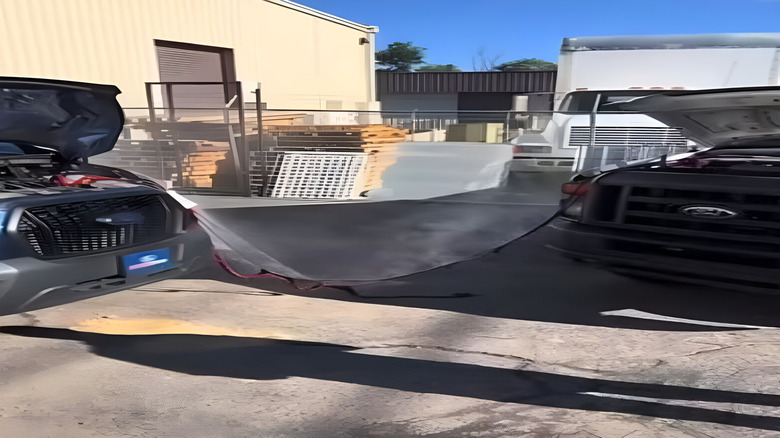What It Means If Your Jumper Cables Start Smoking And Heat Up
Jumper cables are one of the most important tools for a car owner, and should be among the set of tools kept in a car. It helps a car with a dead battery start by connecting it to a functioning battery.By connecting the alligator clips to both batteries' positive and negative terminals, it provides power to start the car with the problem battery. Using a jumper cable is relatively simple, but there are scenarios where it can heat up and start to smoke. The reasons for this vary, and include a wrong polarity connection, using an incorrect gauge of cable, a fault in an electrical component in the car being charged, or damage in the jumper cable being used.
A wrong polarity connection means the jumper cable is attached backwards, where the battery's positive and negative polarities are inverted. This causes a dead short, which can potentially melt the cable. For jumpers with a smaller cable gauge, the electricity encounters more resistance, which causes it to heat up. In the case of a fault within the electrical components of a car, there is a risk of extracting too much power, and the jumper cable could obstruct the flow of electricity, which could cause it to melt. Lastly, a damaged jumper cable due to corrosion, cuts, or failing insulation can cause it to short-circuit and overheat.
The possible hazards caused by an improperly connected jumper cable can range from short circuits, the cable melting, fire, or worse, the battery exploding. In addition, several of the car's components, including the alternator, electronic control unit, fuses, relays, and wiring, could be damaged due to the short circuit. In general, a wrong connection is very harmful and should be avoided.
Have the tools and know how to use them
Because of its importance during emergencies and unexpected scenarios requiring a jump start, selecting the appropriate jumper cable is essential to avoid potential issues when used. When choosing a safe jumper cable, determine use case, available features, and build quality. While they may all look the same, there are several kinds of jumper cables, with some better suited for certain types of vehicles, and others with additional safety features, which is particularly useful if the jumper is accidentally positioned in reverse on a car.
Choosing jumper cables should start with the gauge, bearing in mind that a thicker gauge is better because it can handle more current. The gauge numbers for jumper cables range from 1 to 12, and for cars, it is best to use gauges between 4 to 6 for smaller, and 2 to 3 for bigger-sized vehicles like trucks and SUV's. For length, it's ideal to have longer jumper cables to make it easy to connect between cars. Ideally, you can opt for thicker cables with good insulation. Clamp size is also important because it directly connects to the batteries. Lastly, jumpers that have surge protection or reverse polarity protection are ideal because it can reduce the risk of damage the battery or the vehicle.

